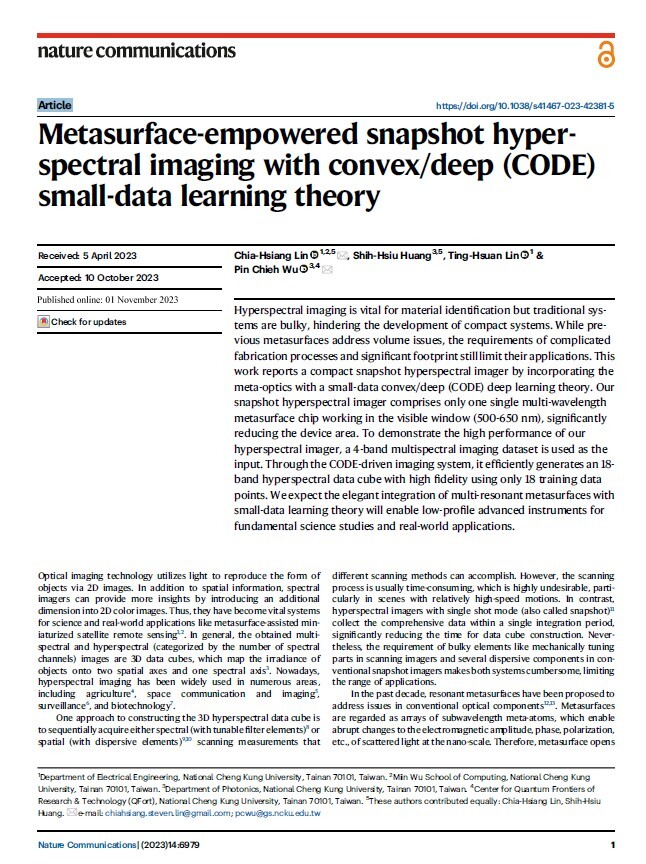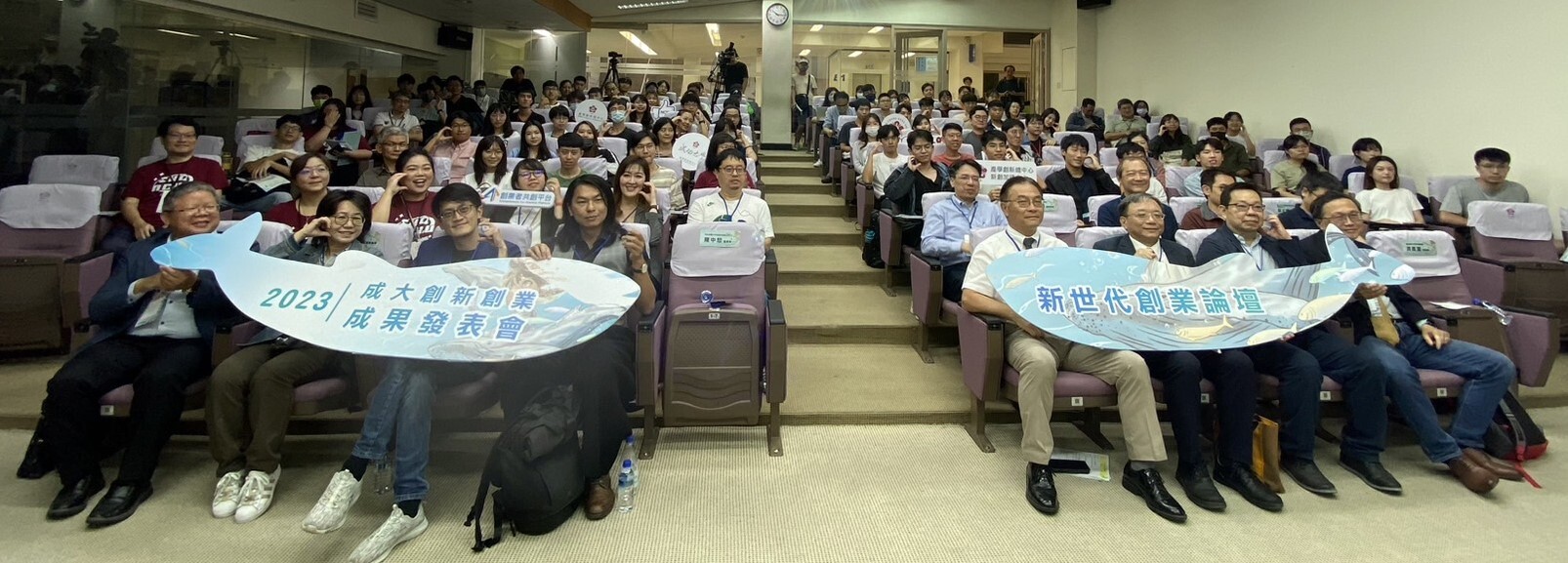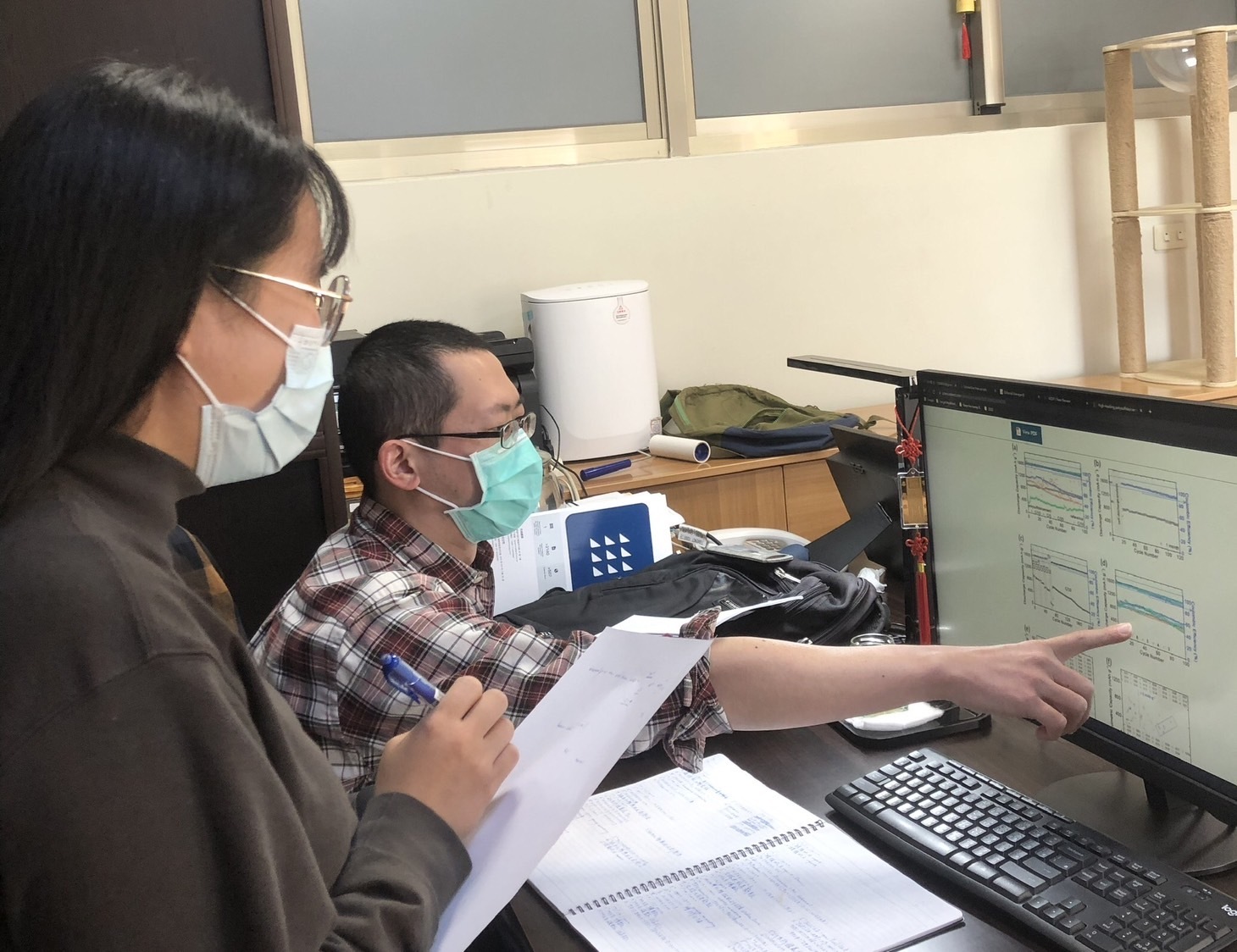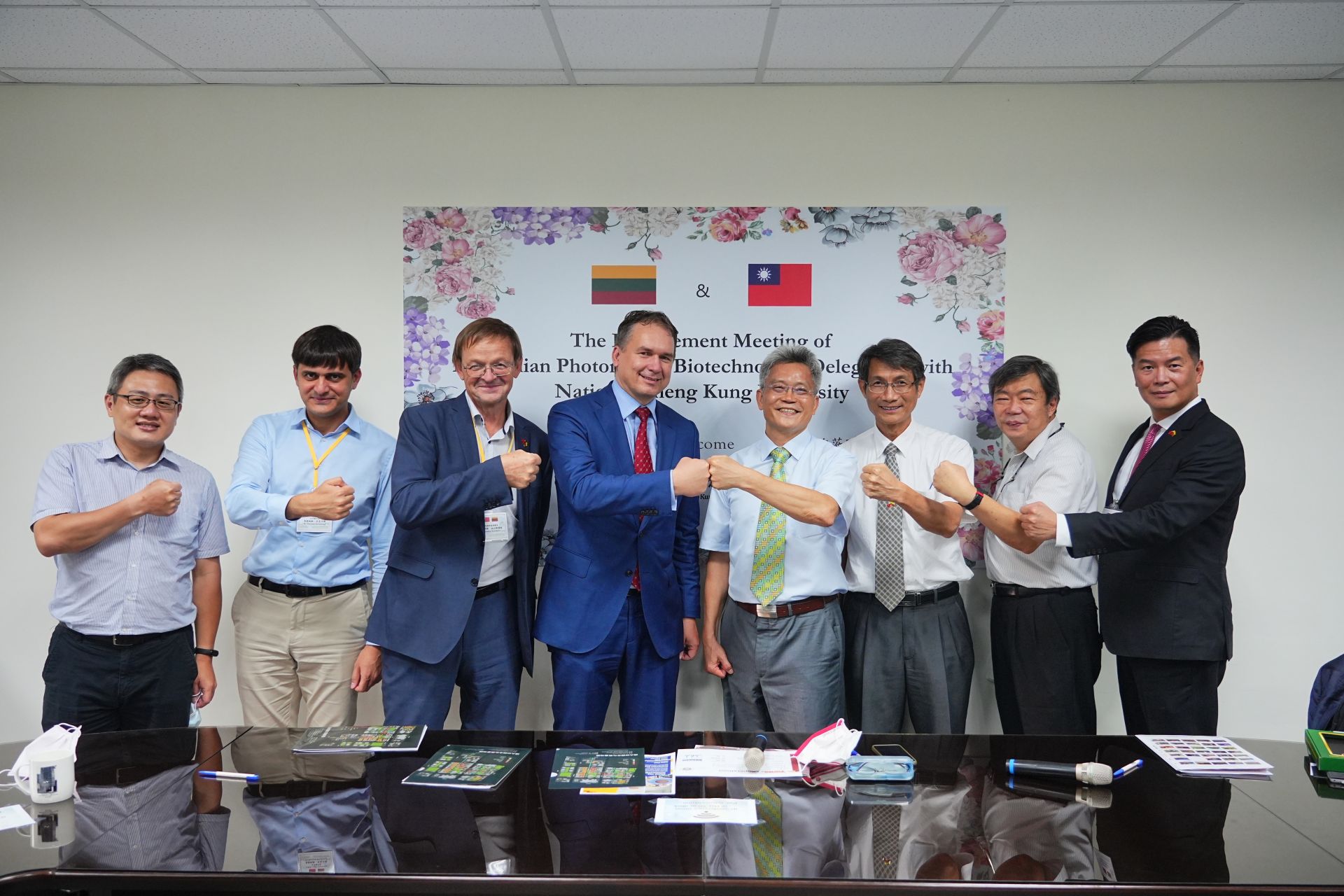NCKU Team's Dual Breakthrough in Super-Resolution Optics Paves Way for Taiwan's First Autonomous Hyperspectral Microsatellite
The outstanding results related to this achievement have been published in the sub-journal of the prestigious "Nature" journal, "Nature Communications," with an impact factor of 16.6, under the title "Metasurface-empowered snapshot hyperspectral imaging with convex/deep (CODE) small-data learning theory (Full content)." The research team, consisting of the two professors and doctoral student Shih-Hsiu Huang from the Institute of Electro-Optical Engineering and master's student Ting-Hsuan Lin from the Department of Electrical Engineering, is receiving global attention for this remarkable accomplishment.
This development represents a dual breakthrough in super-resolution interface optics, considered a new milestone in hyperspectral imaging technology. The paper was published in "Nature Communications," one of the world's top journals. Currently, satellites are trending towards low orbit and miniaturization, allowing for expanded applications. These applications range from early military purposes to a future that will be inseparable from human life. Associate Professor Lin mentioned that the research received support from the Ministry of Education's Higher Education Sprout Project. The next step is to collaborate with other fields to develop Taiwan's first autonomous hyperspectral miniature satellite.
What is a hyperspectral satellite? Associate Professor Lin explained that traditional satellites capture images of the Earth from high altitudes. For example, when capturing a green dot, it might be challenging to distinguish whether it is greenery or a green tank. However, hyperspectral satellites can analyze the components and texture of an image using different wavelengths, making accurate judgments. Currently, only a few entities, such as NASA, possess hyperspectral satellites. Integrating large-scale equipment into miniature satellites, almost palm-sized, poses significant challenges.
Associate Professor Wu stated that traditional hyperspectral imaging requires multiple optical accessories combined with lenses for capturing images at different wavelengths, making the equipment quite large. To address this issue, the team combined expertise in both software and hardware, developing miniature hyperspectral imaging technology. They designed a nano-scale "multi-wavelength oblique focusing metasurface mirror" composed of multiple resonance plasmon subwavelength atomic (metasurface) structures, significantly reducing the size of the device. Achieving hyperspectral imaging with something invisible to the naked eye is genuinely exciting.
Moreover, Associate Professor Wu and Lin explained that the downside of reducing the device's size is that the captured images may not be clear enough. Obtaining hyperspectral image data is also challenging and cannot be easily compensated through big data learning. Therefore, the team introduced a novel machine learning theory using "convex optimization." This theory allows deep learning without requiring extensive data. Even with only four input images, it can expand the number of spectral channels through computation to 18, reconstructing high-fidelity hyperspectral images. Experimental results show that the captured results and analysis of the new device are nearly identical to regular hyperspectral equipment, with an error of only about 2%, significantly breaking through the limitations of this technology.
Since 2019, Associate Professor Chia-Hsiang Lin has been leading the Ministry of Education's Higher Education Sprout Project titled "Mathematical Theory and Super-Resolution Grating Design for Pioneering Satellite Imaging." The team spent over two years completing this research, producing remarkable results. Associate Professor Lin mentioned that the Ministry of Science and Technology hopes for academic collaboration between software and hardware expertise to make breakthroughs, and this achievement successfully completed interdisciplinary cooperation.
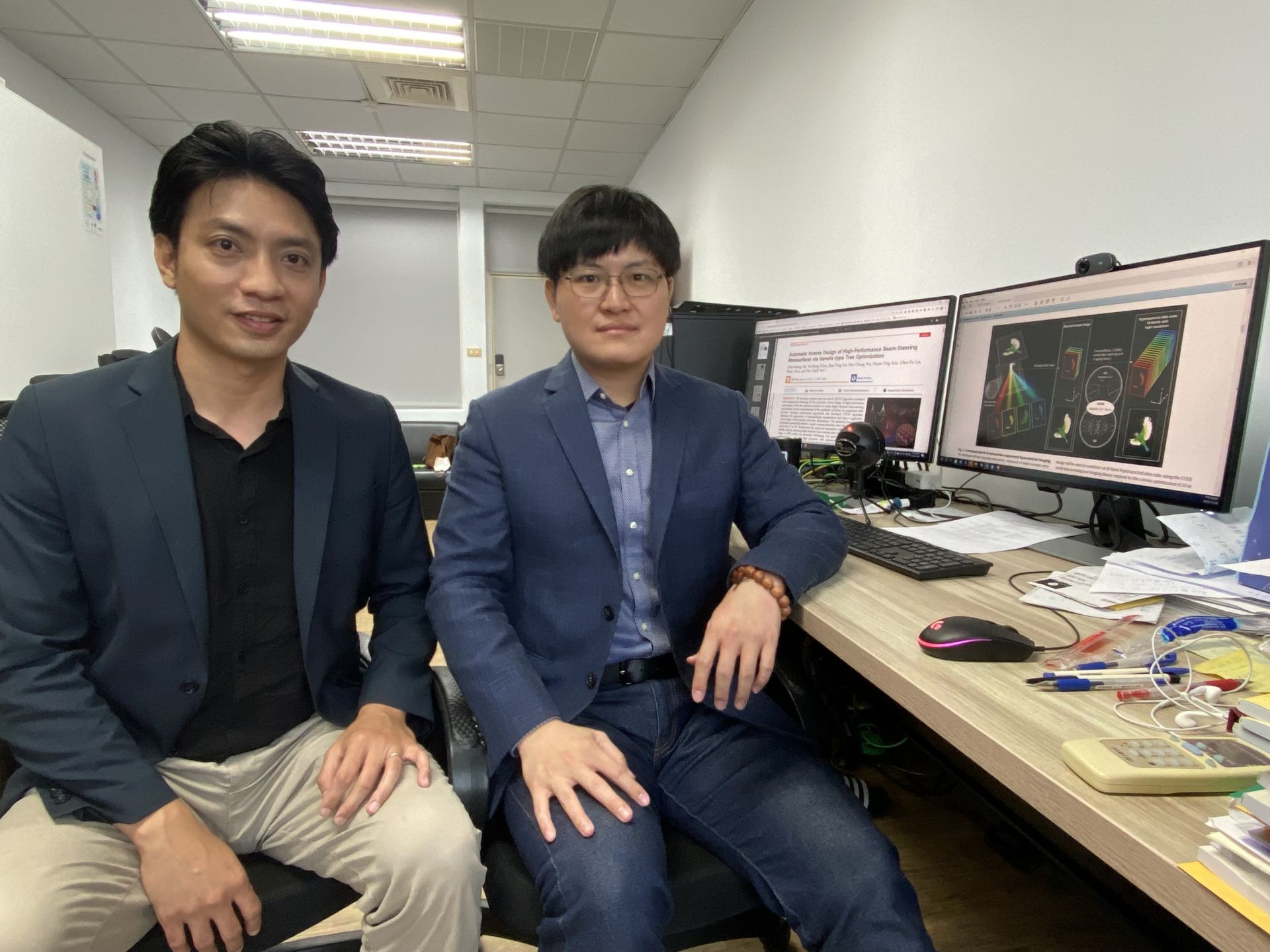
NCKU's Associate Professor Chia-Hsiang Lin from the Department of Electrical Engineering (on the right) and Associate Professor Pin-Chieh Wu from the Institute of Photonics Technologies (on the left) have jointly developed an innovative nanoscale hyperspectral imaging device. Their related research paper has been published in the prestigious "Nature" journal's subsidiary publication, gaining global attention.
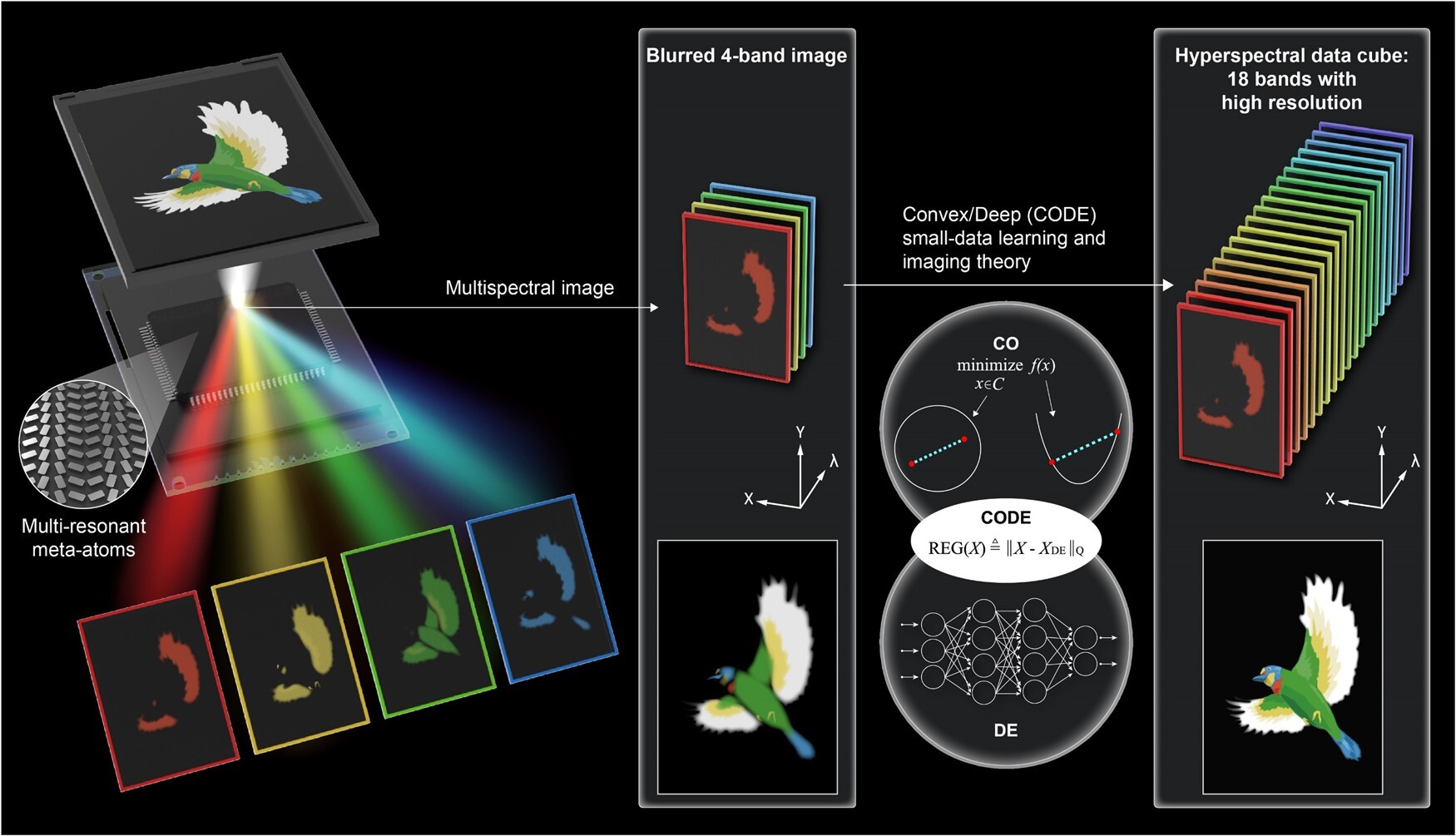
Hyperspectral satellites, which use various wavelengths to analyze the composition and texture of images, traditionally rely on large and bulky equipment.

Associate Professor Chia-Hsiang Lin and Pin-Chieh Wu led a team in developing a groundbreaking nano-scale hyperspectral imaging device. This device, about the size of a pen tip, coupled with advanced computational capabilities, enables the analysis of the texture and composition of objects on the ground from high altitudes.

